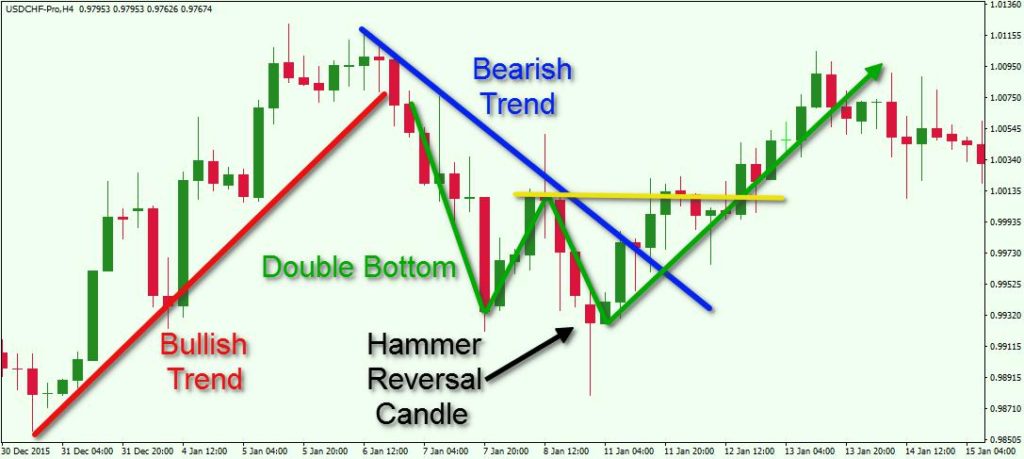Technical Analysis in Forex Trading
Technical analysis is a trading approach that involves studying historical price data to identify patterns and trends. Traders use these patterns to make informed trading decisions, predicting future price movements.
Key Principles of Technical Analysis:
Trend Analysis: Identifying the general direction of price movements. Trends are classified as uptrends, downtrends, and consolidations.
Price Patterns: Recognizable formations in price charts that suggest potential market reversals or continuations. Examples include triangles, flags, and double tops.
Support and Resistance Levels: Areas where price movements have historically struggled to break through. Support levels are where prices tend to bounce off and rise, while resistance levels are where prices may be capped and fall.
Technical Indicators: Mathematical tools used to analyze price data and identify potential trading opportunities. Common indicators include moving averages, oscillators, and trendlines.
Volume Analysis: Measuring the amount of trading activity associated with price movements. High volume usually indicates increased volatility and potential market moves.
Technical Analysis Tools:
Candlestick Charts: Visual representations of price data over time that show opening, closing, high, and low prices for each period.
Moving Averages: Lines that smooth out price data to identify trends and remove noise.
Relative Strength Index (RSI): An indicator that measures momentum and potential price reversals.
MACD (Moving Average Convergence Divergence): An indicator that shows the relationship between two moving averages.
Fibonacci Retracements: Lines that divide a price range into key levels based on the Fibonacci sequence.
Benefits of Technical Analysis:
Pattern Recognition: Helps traders identify potential market opportunities based on historical patterns.
Trend Following: Enables traders to stay in line with prevailing trends and capitalize on price momentum.
Risk Management: Provides insights into market support and resistance levels, allowing traders to manage risk effectively.
Decision-Making: Aids in making informed trading decisions by analyzing multiple indicators and price patterns.
Limitations of Technical Analysis:
Not Predictory: Technical analysis is not a foolproof prediction tool. While it can provide valuable insights, it cannot guarantee future price movements.
Lagging Indicator: Technical indicators are based on historical data, which means they may lag behind current market conditions.
Requires Experience: Proficiency in technical analysis requires practice and experience. It is not suitable for beginners.
Psychological Factors: Technical analysis ignores psychological factors that can influence market behavior, such as fear and greed.
Conclusion:
Technical analysis is a powerful tool for forex traders, providing valuable insights into market trends and potential trading opportunities. However, it is important to use it cautiously, considering its limitations and in conjunction with other trading strategies. By leveraging technical analysis effectively, traders can enhance their decision-making, manage risk, and improve their trading performance.
